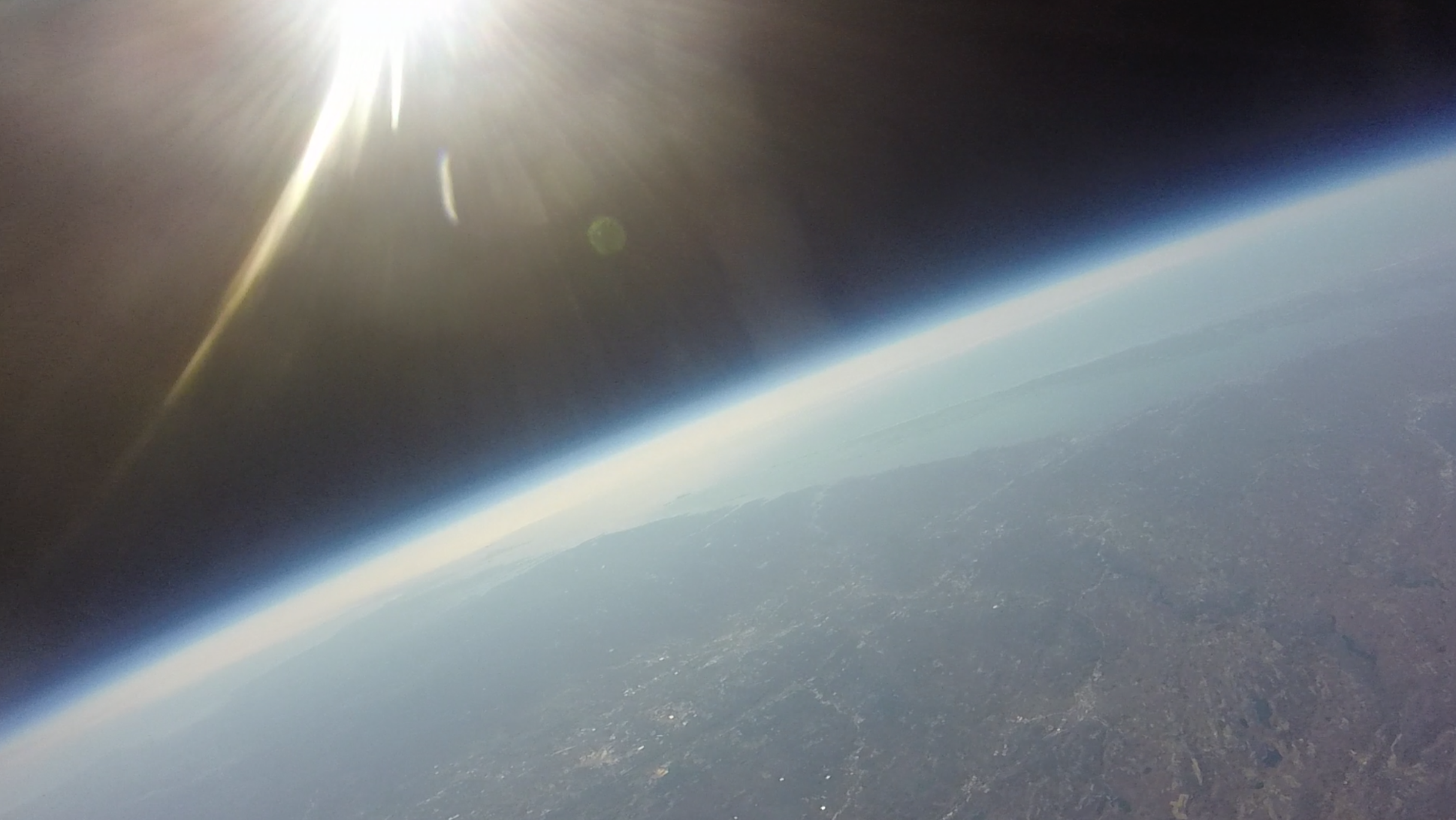Join us on Wednesday at noon Pacific time for the high-altitude ballooning Hack Chat!
The Cope brothers are our hosts this week. Jeremy, a computer engineer, and Jason, a mechanical engineer, have recently caught the high-altitude ballooning (HAB) bug. In their initial flights they’ve racked up some successes and pushed the edge of space with interesting and varied missions. Their first flight just barely missed the 100,000 foot (30,000 meter) mark and carried a simple payload package of cameras and GPS instruments and allowed them to reach their goal of photographing the Earth’s curvature.

Flight 2 had a similar payload but managed to blow through the 100K foot altitude, capturing stunning video of the weather balloon breaking. Their most recent flight carried a more complex payload package, consisting of the usual camera and GPS but also a flight data recorder of their own devising, as well as a pair of particle detectors to measure the change in flux of subatomic particles with increasing altitude. That flight “only” reached 62,000 ft (19,000 meters) but managed to hitch a ride on the jet stream that nearly took the package out to sea.
 The Cope brothers will be joining the Hack Chat to talk about the exciting field of DIY high-altitude ballooning and the challenges of getting a package halfway to space (depending on how that’s defined). Please join us as we discuss:
The Cope brothers will be joining the Hack Chat to talk about the exciting field of DIY high-altitude ballooning and the challenges of getting a package halfway to space (depending on how that’s defined). Please join us as we discuss:
- The basics of flight – balloons, rigging, payload protection, tracking, and recovery;
- Getting started on the cheap;
- Making a flight into a mission with interesting and innovative ideas for payload instrumentation;
- Will hobbyist HABs ever break the Kármán Line? and
- What’s in store for this year’s Global Space balloon Challenge?
You are, of course, encouraged to add your own questions to the discussion. You can do that by leaving a comment on the High-Altitude Ballooning Hack Chat event page and we’ll put that in the queue for the Hack Chat discussion.
Our Hack Chats are live community events on the Hackaday.io Hack Chat group messaging. This week we’ll be sitting down on Wednesday, February 6, at noon, Pacific time. If time zones have got you down, we have a handy time zone converter.
 Click that speech bubble to the right, and you’ll be taken directly to the Hack Chat group on Hackaday.io.
Click that speech bubble to the right, and you’ll be taken directly to the Hack Chat group on Hackaday.io.
You don’t have to wait until Wednesday; join whenever you want and you can see what the community is talking about.
















High altitude balloon is one of those projects I’d love to do, but always chicken out when I consider all the logistics. Interested to see if what everyone thinks about that kind of thing in the chat.
This seems like fun and should be encouraged. Anyone attempting it should have the finical means to pick up their trash when they are with there experiment.
Its very possible for the balloon to land in sea or many 1000km away. Even if the balloon lands near by (<300km) Once the balloon payload hits the ground its usually destroyed so you cant even get GPS position back even if you used satellite communication for it. Payload and the balloon is almost always lost.
What?!?!
My former hackerspace launched seven “space” balloons, and we recovered each and every one. They maybe travelled 100 km, but not 1000. We never lost a GPS transponder, and even our more “hacky” payloads worked most of the time. One of our preferred enclosures was a kid’s insulated soft-sided lunch box.
Use a parachute, located a few meters below the balloon with a swivel on the lines so that they don’t tangle. Everything will work out fine.
As far as predicting where it lands, there’s https://en.wikipedia.org/wiki/Winds_aloft and a bunch of services that will predict the landing site for you. The folks at Space Balloon Challenge will point you to the state of the art. Towards the end of my time there (2011) we used software that continually updated predictions based on the current location of the balloon, and it was pretty accurate. We never caught one in our hands, though. :) Pick a couple launch sites, and plan around which predicts the best landing.
(Write your name, address, and a message that says something like “harmless science experiment” on the box! We thought we lost our first one, but it turned up months later b/c of a name and phone number.)
Anyway, putting up a space balloon is a biggish, but manageable, project that involves many disciplines: radio, tracking software, hardware design if you do your own payload, and even just folks to help handle the balloon during launch. It’s one of the best hackerspace-building activities I can think of.
Fr’instance:
http://wiki.hacdc.org/index.php?title=HacDC_Spaceblimp
https://youtu.be/6Cz4s8potWE?t=45
I am an American Science teacher teaching junior high kids in Norway. I have sent up a total of six balloons to the edge of space with my students, each successfully recovered, and it is amazing how this activity has engaged, challenged, and inspired my students. I highly recommend high altitude enthusiasts join the global space balloon challenge community founded by my friends in Palo Alto. Their website is found here https://www.balloonchallenge.org/ while my twitter feed highlighting my balloon advenures is here. https://twitter.com/Newtongjengen
I really hope you can join our Hack Chat tomorrow – we’d love to hear more!